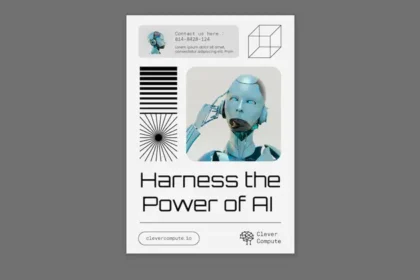Document conversion between old and new software slows down many business processes. As organisations rely on a mix of legacy and modern platforms, these inefficiencies can result in missed opportunities and reduced operational efficiency, affecting business goals.
This documentation gap affects productivity in tangible ways. Teams waste significant time manually reformatting documents or troubleshooting conversion errors, which can prevent agility and make it difficult for organisations to create new solutions with outdated systems.
Important formatting elements like tables, charts, and specialised fonts often break during transfers between systems, unless robust conversion tools are used to preserve these features throughout the process. For executives and managers, these seemingly small technical issues compound into major workflow disruptions.
Well-designed document conversion workflows can transform this frustrating situation. When organisations implement strong conversion workflows, they remove a major source of frustration. This approach keeps document fidelity across their technology ecosystem and bridges the gap between legacy systems and modern platforms without requiring costly infrastructure overhauls.
The Hidden Costs of Document Format Incompatibility
When businesses operate with both legacy and modern systems, document format barriers create notable but often overlooked costs. Staff frequently need to convert PDF to Word documents. Using resources such as PDF to Word online can address this gap, but many organisations fail to see the full impact.
The financial impact extends beyond obvious productivity losses. Staff members spend hours manually retyping content from legacy documents into modern formats. While inefficient document processes can account for a large share of office worker time, the broader issue is that legacy systems often prevent organisations from operating efficiently and meeting new business needs due to outdated workflows.
Manual conversion introduces a risk of data entry errors. Inaccuracies resulting from manual document handling are a top concern for professionals, as these errors increase the likelihood of decision-making problems and compliance breaches in industries that depend on accuracy and auditability. The inability to maintain data integrity during conversion can have serious consequences for regulated sectors.
Document conversion challenges also create audit trail problems. When files move between systems through manual processes, organisations struggle to maintain proper version control. This makes it difficult to track document history for compliance purposes.
Four Key Requirements for Enterprise Document Conversion
Effective document conversion solutions must meet several important requirements to serve business needs properly. Security stands as the foremost concern when handling sensitive business information. Enterprise-grade solutions should offer encryption during file transfer and processing to keep data private and protected.
Format preservation capabilities determine whether converted documents maintain their original appearance. High-quality conversion tools keep complex elements like tables, charts, and specialised fonts intact. This ensures business documents retain their professional appearance across systems.
For organisations processing high volumes of documentation, batch conversion capabilities are necessary. Enterprise environments often need to convert hundreds of documents simultaneously. Solutions should handle bulk processing efficiently without reducing quality or security.
Integration with existing document management systems is another key requirement. Conversion tools should connect seamlessly with current workflows rather than creating new silos. This includes compatibility with cloud storage platforms and content management systems already in use.
Implementing a Standardised Document Conversion Workflow
Establishing standardised document conversion protocols across departments forms the foundation of an effective strategy. Organisations should develop clear guidelines specifying which conversion tools to use for different document types. These protocols should address naming conventions as well as storage locations.
Staff training plays an important role in successful implementation. Training programmes should accommodate varying technical proficiency levels, from basic users to advanced administrators. Short, focused training sessions with practical exercises tend to work better than detailed manuals.
Quality control checkpoints help verify conversion accuracy throughout the process. Using automated validation tools can identify formatting issues or missing content in converted documents. Establishing a human review stage for important business documents ensures nothing major gets lost in translation.
Measuring return on investment through concrete metrics shows the benefits of improved conversion workflows. Organisations should track time savings compared to previous manual processes. Error reduction rates serve as another useful metric for compliance-sensitive documents.
Future-Proofing Your Document Management Strategy
Emerging technologies are expanding document conversion capabilities. Artificial intelligence now supports more accurate format recognition during conversions, and machine learning algorithms can predict formatting issues before they occur. Cloud integration enables smooth conversion across multiple devices and locations, supporting the shift toward remote and mobile work environments.
The rise of remote work environments creates new document accessibility challenges. Conversion solutions must balance accessibility with security considerations. As more employees work from smartphones and tablets, mobile-friendly conversion tools have become essential.
Changing compliance requirements demand flexible document management approaches. New regulations frequently introduce additional documentation standards. Privacy laws affect how documents containing personal information must be handled during conversion and storage.
Document volumes continue growing in most organisations, as legacy systems often hold data in outdated formats that complicate analysis and integration among departments. Scalable conversion systems handle this growth without performance slowdowns. Cloud-based solutions offer particular advantages for scaling, since they can adjust resources based on demand.










